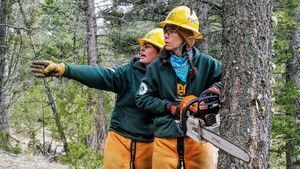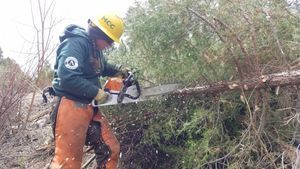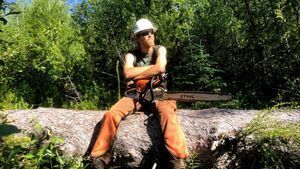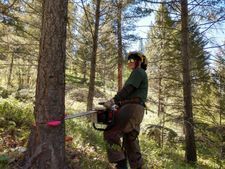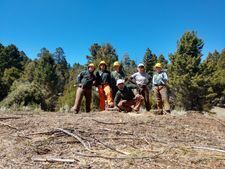Fuels and Fire Crews
Fuels and Fire crews work on projects to reduce the impact of wildland fire and restore habitat. Participants will have the opportunity to receive extensive training and potential certifications in wildland firefighting, including a nationally recognized chainsaw certification (S212), basic wildland firefighting classes (S130, S190, L180, IS100, IS700), in addition to having an opportunity to receive a wildland fire incident qualification “red” card. Project work will vary, but could include fuels reduction, habitat restoration, and other conservation projects. Not all CLs will work on all types of projects!
Want to learn more about specific fuels and fire crew projects? Check out these projects from previous years to get a sense of the great work that has been accomplished by our crews!

![[Image description: Six MCC members stand in a field, two holding large crosscut saws, and two with mattocks in their hands.]](https://cdn.firespring.com/images/c4e123e3-961b-4f85-b5e8-3b01cf413aa0.jpg)
